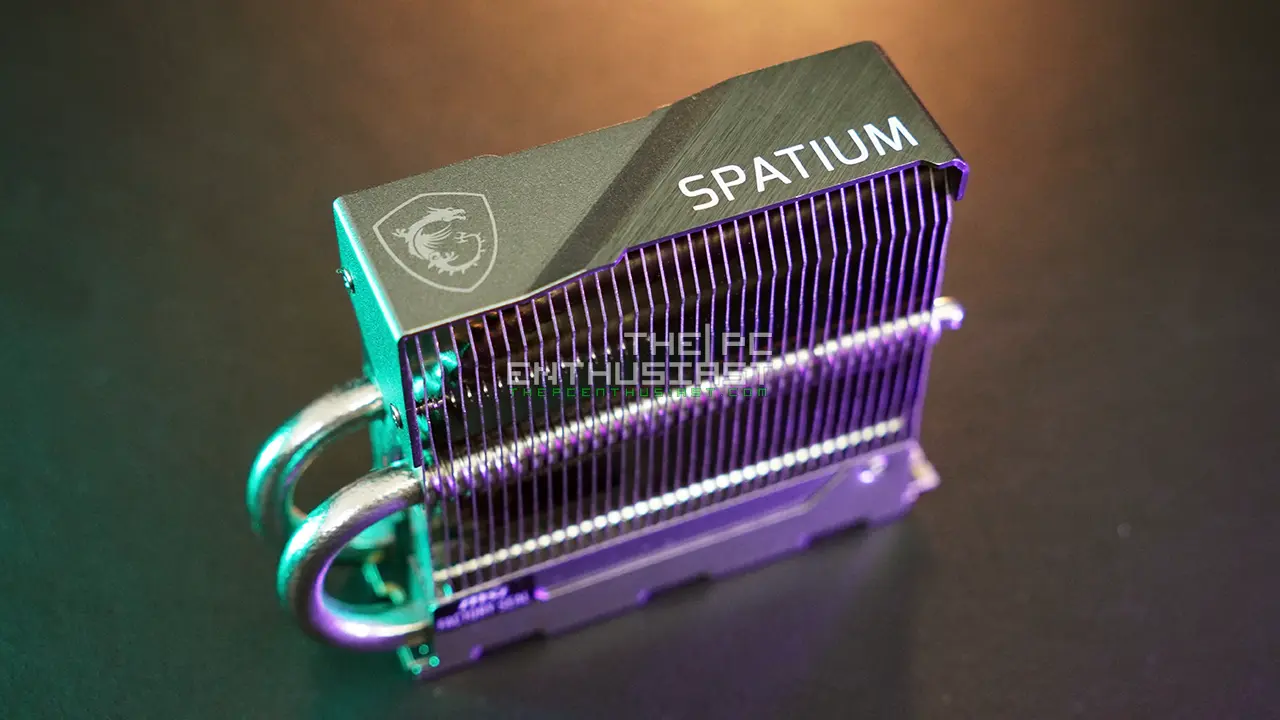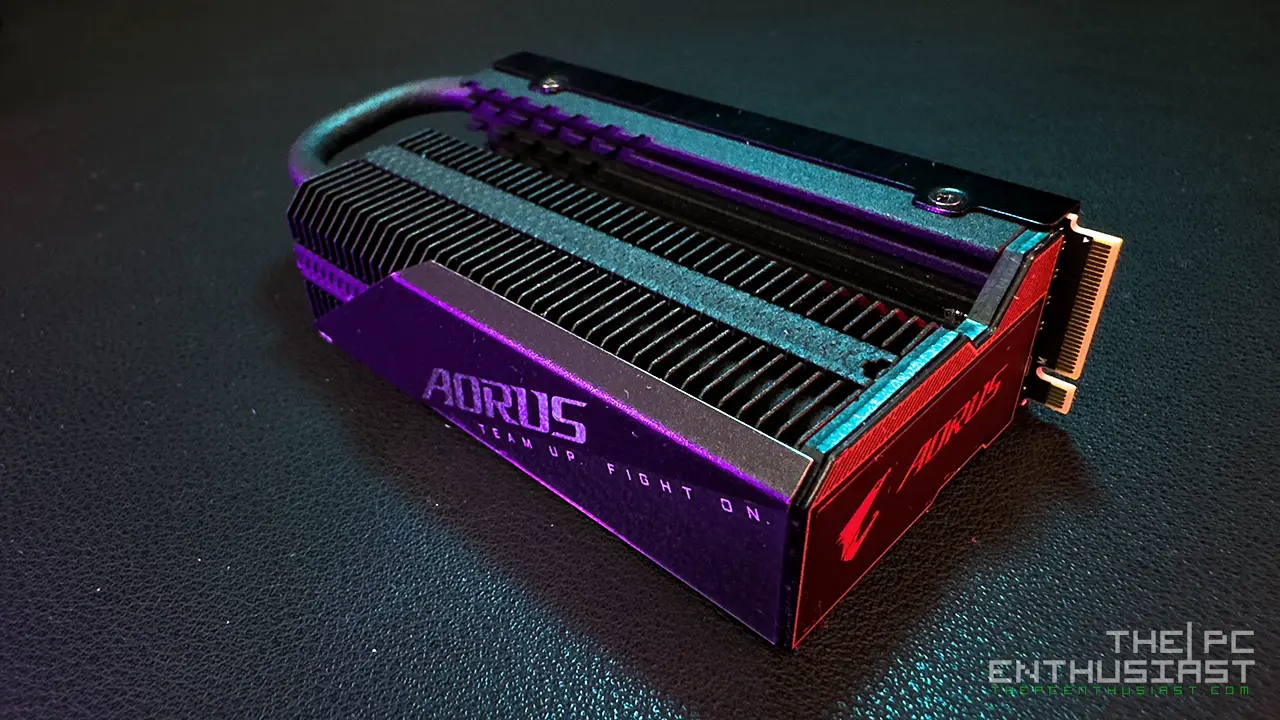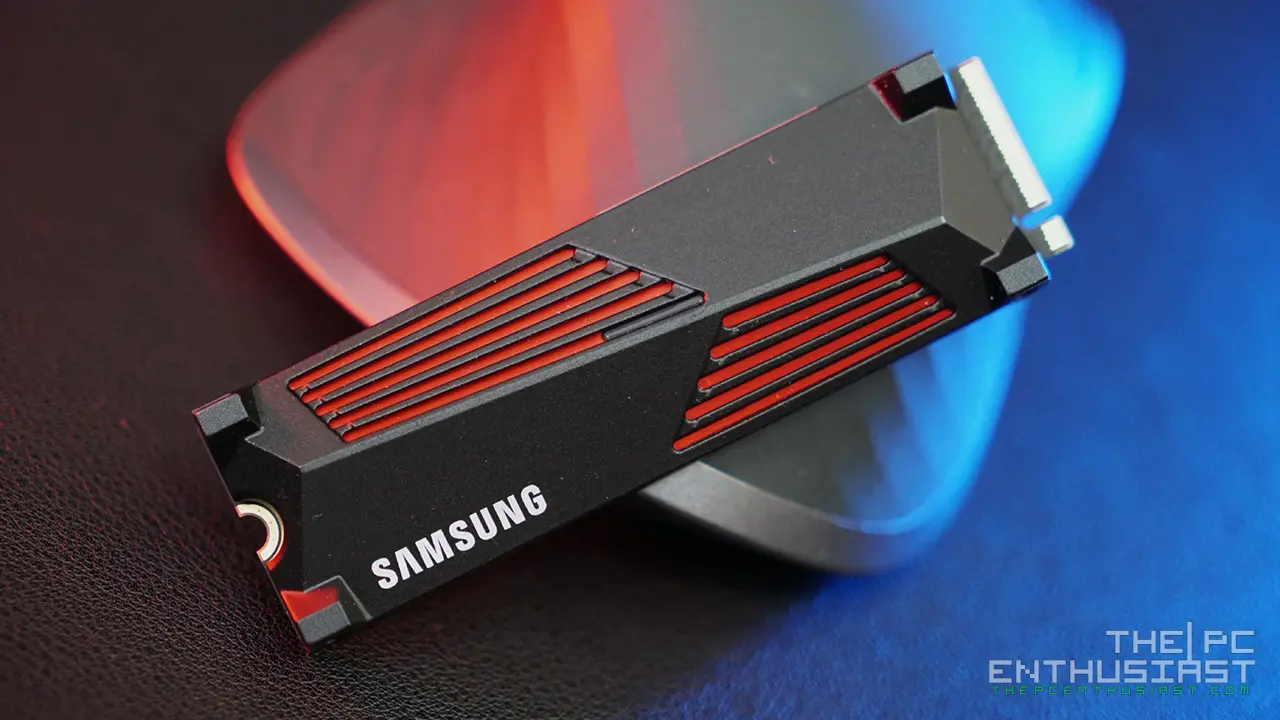Lexar released its latest SSD last month – the Lexar NM620 M.2 NVMe SSD series. It’s a DRAM-less M.2 SSD targeted towards mainstream consumers and it is the successor to their NM610 released last year. The new NM620 offers improved speed over its predecessor and supports NVMe 1.4 standard. It will compete with other mainstream and DRAM-less M.2 SSD in the market; like the WD Blue SN550, Crucial P2, and the new Samsung 980. If you’re in the market for a budget-friendly M.2 SSD, check out our Lexar NM620 M.2 NVMe 1TB SSD review below and find out if this SSD is for you.
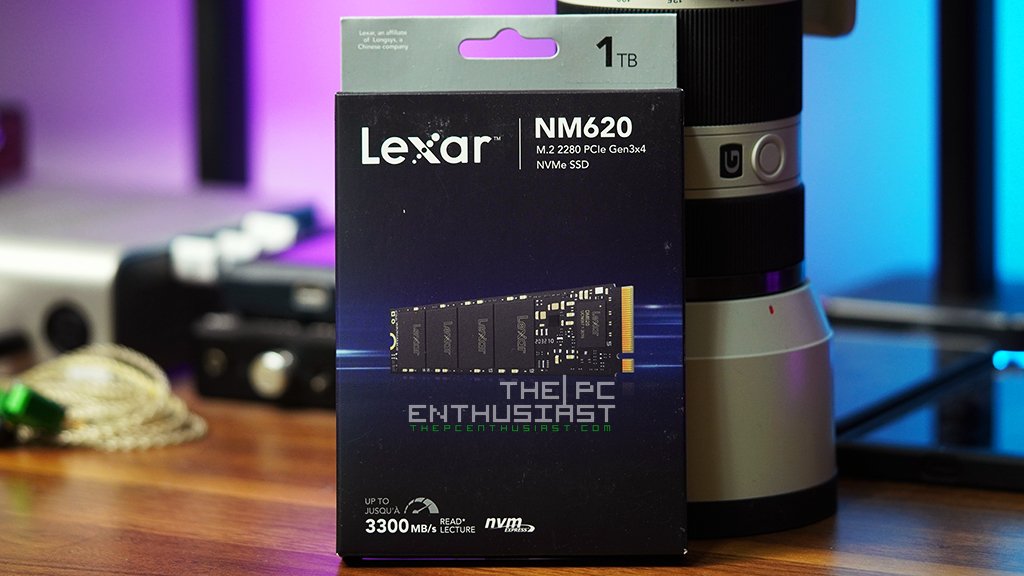
Lexar NM620 M.2 2280 NVMe SSD Review
Right of the bat, the Lexar NM620 M.2 SSD series is the company’s latest mainstream SSD targeted towards users who are looking for a fast and reliable SSD but on the budget side. It features a PCIe Gen3x4 interface and sports NVME 1.4 standard. Based on the paper, it offers a sequential speed of up to 3,300MB/s read and 3,000MB/s write.
On its marketing materials, it doesn’t mention or highlights the controller it uses. But when we tested it and peeled the sticker, I saw a Lexar DM620 chip along with four Micron 3D TLC NAND flash. If I am not mistaken, Lexar doesn’t produce its controller. So this could be a modified controller from a third party or a rebranded controller from a different company.
The Lexar NM620 M.2 NVMe SSD series features Low-Density Parity Check (LDPC) technology. It makes data transfers more reliable by fixing data errors before they have a chance of slowing down the system. It’s available in 256GB, 512GB, and 1TB capacities and the company is offering a limited 5-year warranty for this SSD series.
You can check out the rest of the specifications below. After that, let’s take a closer look at the drive and see how it performs.
Lexar NM620 SSD Specifications
| Product | NM620 M.2 2280 NVMe SSD |
|---|---|
| Capacity | 256GB, 512GB, 1TB |
| Forma Factor | M.2 2280 |
| Interface | PCIe Gen3x4 |
| Speed | 256GB - sequential read up to 3000MB/s, write up to 1300MB/s 512GB - sequential read up to 3300MB/s, write up to 2400MB/s 1TB - sequential read up to 3300MB/s, write up to 3000MBs |
| NAND Flash | 3D TLC |
| Operating Temperature | 0°C to 70°C (32°F to 158°F) |
| Storage Temperature | -40°C to 85°C (-40°F to 185°F) |
| Shock Resistant | 1500G, duration 0.5ms, Half Sine Wave |
| Vibration Resistant | 10~2000Hz, 1.5mm, 20G, 1 Oct/min, 30min/axis(X,Y,Z) |
| TBW | 256GB: 125TB, 512GB: 250TB, 1TB: 500TB |
| DWPD | 0.44 |
| MTBF | 1,500,000 Hours |
| Dimension (L x W x H) | 80 mm x 22 mm x 2.25 mm / 3.15" x 0.87" x 0.09" |
| Weight | 9g |
Closer Look
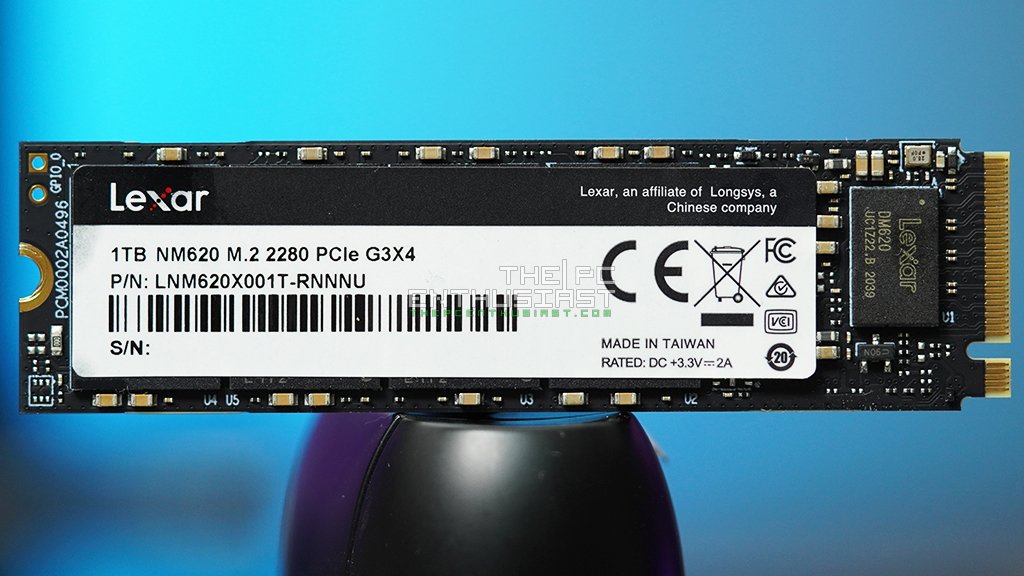

The Lexar NM620 has an all-black PCB design and a sticker with a black and white label. Its color scheme is primarily black and white, so it will blend well with most system builds. Since it is a single-sided drive, the backside isn’t populated. There is no (thermal) heat spreader as well.



The 1TB capacity NM620 has four Micron 3D TLC NAND flash chips. You can see the Lexar DM620 controller near the M.2 finger. Since this is a DRAM-less drive, there’s no DRAM chip to be found. Lexar is using a Micron NW964 chip with a part number of MT29F2T08EMLCEJ4-R.
Test Setup Used

I tested the NM620 1TB capacity on an MSI MEG X570 ACE motherboard powered with an AMD Ryzen 7 3700X CPU. Below are the rest of the system’s specifications:
| Operating System | Windows 10 Pro 64bit version 2004 |
| Motherboard | MSI MEG X570 ACE |
| Processor | AMD Ryzen 7 3700X |
| CPU Cooler | Noctua NH-12US |
| Memory | Crucial Ballistix Elite 32GB DDR-4000 |
| Graphics Card | MSI GeForce RTX 3060 Gaming X Trio 12G |
| OS Drive | ADATA Spectrix S40G M.2 NVMe SSD |
| Power Supply | Seasonic Prime 850W Titanium |
Lexar NM620 M.2 NVMe SSD Benchmark Results
In testing the NM620, I ran several synthetic benchmarks to see how it fares against other (NVMe) SSDs in the market. I also ran a real-world copy test after the synthetic benchmarks. Below are the results I got:
AJA Benchmark Results

AJA system test uses video files to test the read and write speed of the drive; it’s mostly sequential. In this test, the Lexar NM620 fell short of its advertised speed. I got around 2,600MB/s sequential read and around 2,100MB/s sequential write.
AS SSD Benchmark Results
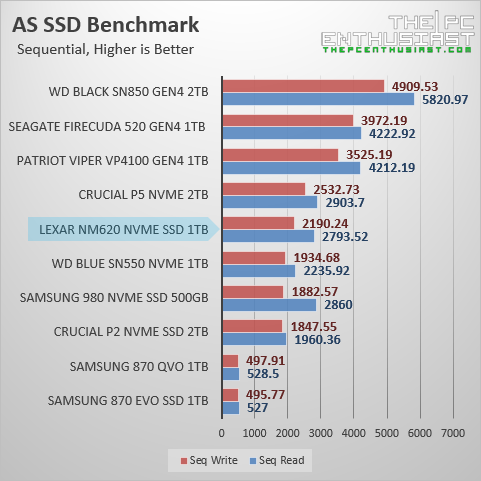
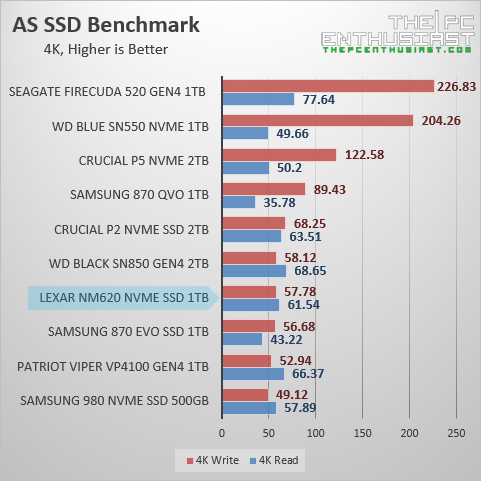
The sequential read and write speeds I got in AS SSD benchmark is similar to AJA’s system test. In addition to the sequential test, we can see that the NM620’s 4K random performance is similar to other mainstream SSDs.
ATTO Disk Benchmark Results
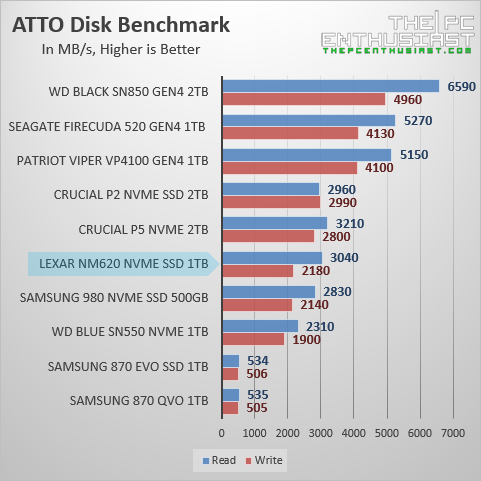
ATTO Disk benchmark usually gives the highest possible read and write performance of a drive. In this test, we can see that the NM620 was able to achieve around 3,000MB/s sequential read speed. It is somewhat close to its advertised sequential read speed. However, it still falls behind when it comes to its advertised sequential write speed. I only got around 2,1000MB/s sequential write, which is far from the 3,000MB/s advertised speed.
CrystalDiskMark Benchmark Results


Using CrystalDiskMark 8.0.1, we can see that the NM620 performs quite well and was able to slightly outperform the other DRAM-less M.2 SSD. The same can be said during the 4K random test. Although the WD Black SN550 was able to take the lead when it comes to random write in this test, compared to the other DRAM-less SSDs.
In case you are not familiar, the “other DRAM-less drive”, I am referring to the Samsung 980, Crucial P2, and WD Blue SN550. Do not confuse the Samsung 980 with the Samsung 980 Pro. The former is Samsung’s latest DRAM-less Gen3 NVMe SSD; while the latter is the company’s flagship NVMe Gen4 SSD.
PCMark 10 and 8 Storage Benchmark Results


Finally, I tested the Lexar NM620 1TB SSD using PCMark 10 and 8’s storage benchmark test. Both tests are intensive and take about an hour (or more) to finish. These tests use a wide-ranging set of real-world traces from popular applications (Adobe Creative Suite, Microsoft Office), and common tasks to fully test the performance of these modern drives. This will give us a more realistic expectation of a drive’s performance and a closer to a real-world testing scenario.
The results that I got for the NM620 were quite not favorable for the drive. It was outperformed by the other DRAM-less drive using PCMark 8 storage test. Although it was a close fight between the P2 and NM620.
Meanwhile, in PCMark 10 Full System Drive, the NM620 was able to outperform the Crucial P2 by a few points and a few MB/s of bandwidth. However, both the WD Blue SN550 and Samsung 980 were performing better, especially that 980.
Actual Copy Test
Now let’s do some real-world copy test. In this test, I copied a few game clips with a total of 310GB. I am copying the files from a Samsung 980 PRO Gen4 SSD to avoid some bottlenecks. I’m just copying compressed files (mp4) in this test. So, don’t expect to get similar behavior or speed when copying various file sizes and types in one go.


In the first few minutes of copying the files, the speed was bouncing from around 1.6GB/s to 2.2Gb/s give or take. That’s more or less similar to the sequential write speed we got from the synthetic benchmarks. The next question is how long can the NM620 retain or sustain that speed before dropping.

After copying around 200GB, the speed went down to around 840MB/s to 890MB/s. I guess the limit was around 200GB, then you can expect its speed will drop significantly. It finished copying the remaining 100GB files hovering around 800MB/s. That’s not bad actually, 200GB is a lot of data to be copied already.
Note that I am copying from a faster drive and that drive is not an OS drive. So, expect to get a lower or slower speed if you are copying from the OS drive or other drives, especially SATA drives.
Pricing and Availability
The Lexar NM620 M.2 NVMe SSD is now available. It comes with a manufacturer’s suggested retail price of $89.99 USD for the 512GB capacity, and $159.99 USD for the 1TB capacity. I don’t see the 256GB capacity being listed at this time. Lexar is also offering a limited 5-year warranty for the NM620 SSD series. SSD prices tend to change, so, for the latest pricing and availability, kindly check out the link(s) below.
Lexar NM620 latest pricing and availability:
For the US: available on Amazon.com here
Lexar NM620 M.2 NVMe 1TB SSD Review Conclusion
Lexar’s latest mainstream M.2 NVMe SSD is no slouch despite being DRAM-less. Based on the results I got, its performance is quite acceptable. However, it did fell short of its advertised speeds. Though I was able to get above 2,000MB/s of sequential write speed, it’s still far from the 3,000MB/s Lexar advertised.
Comparing it with the other DRAM-less drives in the market, the NM620 was able to compete with them. Honestly, in real-world use, you won’t be able to tell the difference. Not unless you benchmark and compare the numbers side by side. And as you can see from the results, it’s not far from other SSDs in its class. Never mind the Gen4 SSDs on the benchmark graphs because those are on a different class.
When I read Lexar’s marketing materials regarding the NM620, the company is marketing this drive towards “power users”. According to Lexar, and I quote “this is the right fit for users who want next-level performance for heavy workloads, as well as those who expect powerful and effective performance for demanding creative workstations and gaming experiences”. Well, I wouldn’t be sure about that, especially considering that it is DRAM-less and the speed for those types of workload is simply not there.
However, when it comes to daily use and typical desktop operation, and even gaming, I think the Lexar NM620 is a good option. But Lexar needs to adjust its pricing because the entry-level market is very crowded and the competition is very tough. At the time I published this review, the WD Blue SN550 is the cheapest ($110) compared to the other DRAM-less drive in this review. It is followed by the Crucial P2 ($125) and Samsung 980 ($130).
I don’t have any problems recommending this drive. It has a good performance, reasonable endurance, and is back by a 5-year limited warranty. But it needs to lower its price to compete with the other drives better.



